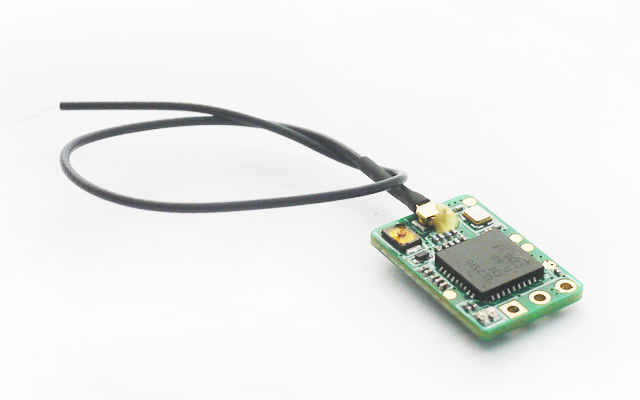What is a radio receiver, and what does it do? How do I know which one is right for me?

Class is in session.
A radio receiver, also known as RX, is what will let your drone talk to your remote. Your radio receiver is what will pick up and listen to the stick inputs you give on your radio controller. Broadcasting in milliseconds, the radio receiver relays those messages to the flight controller of your quadcopter which will then turn into actual flight movements. All of this in practically real time!
Most radios have four main inputs which is: throttle, yaw, pitch and roll. It will also include four to twelve more channels for your auxiliary switches depending on your receiver’s capabilities and how you have set it up. It runs on a 2.4Ghz band but makes its own unique connection with each radio, this is what happened in the bind process (please see article on “binding”). This special communication inside of the 2.4Ghz band is what ultimately allows hundreds of pilots to all fly together.
The first thing in choosing a receiver is to match it to your radio the top brands in this sport are: (let us know if we have left any out!)
You will want to be sure your receiver is compatible with your radio controller. After that you will then need to select the features you are interested in having and how many channels you would like. Channels can be referred to as multiple things in the FPV world. In this sense we are referring to the allowed switches or inputs you will have on your radio. If your receiver has eight channels, four will already be taken for the basic movements of your copter. These four are used by the gimbals, the remainders will be switches. Receiver’s talk to the radios with different protocols, back in the old days they use a protocol called PWM or Pulse Width Modulation. This was known to be very fast and efficient. As technology has progressed and multi-rotors have grown as a sport and community, they have developed new protocols like PPM or SBUS.
PWM uses wires to each servo or ESC to communicate in analog signal. Basically, the length of the signal determines the output or the position of the stick. With Multi-rotors having four main stick inputs, and then at least one more channel to arm the copter, you can easily understand why all this wiring is undesirable.
PPM is Pulse Position Modulation, this will sometimes be called PPMSUM, and also CPPM. This protocol’s set up only requires three wires: your signal wire, ground wire and of course, your power wire. A good portion of quadcopter pilots use more than eight channels, and with PPM you are usually maxed out at eight. Unlike PWM sending one signal per wire, PPM sends signal after signal all through one wire!
Another protocol is PCM or Pulse Code Modulation. This protocol is a digital signal unlike PWM. This means that it will use ones and zeros rather than measure the amount of time a signal is on. This protocol has the power to pick up on a error signal, and even correct it! The speed in communication is greatly different. Receiver’s and how they work and the different types of of protocols and how those work is a different class all together. Please let us know if you are interested in doing summer school classes to learn more about this.
In our radio class at My FPV School you can read and learn about different frequencies and why to use which one you will use. You can also read and learn about radio modules which will allow for lower frequencies like 433MHz and 900MHz this is designed for higher penetration which makes for longer range. Keep in mind the lower the frequency the bigger the antenna. But for general freestyle or racing you will fly on 2.4Ghz without a radio module. Some of the different features include smart port, which is where your receiver allows telemetry for your radio so you can adjust things like PID’s and Rates. Other things to consider are size and weight. If you’re designing and building to race, or be compact, small weight differences can matter.
Now that you know what you need, and what you want from your receiver. We also know that we need to match our receiver to our radio, and then we’ll learn to install it, you can find this lesson at My FPV School soon.
Buy Radio Receivers for your FPV Racing Drone here.
